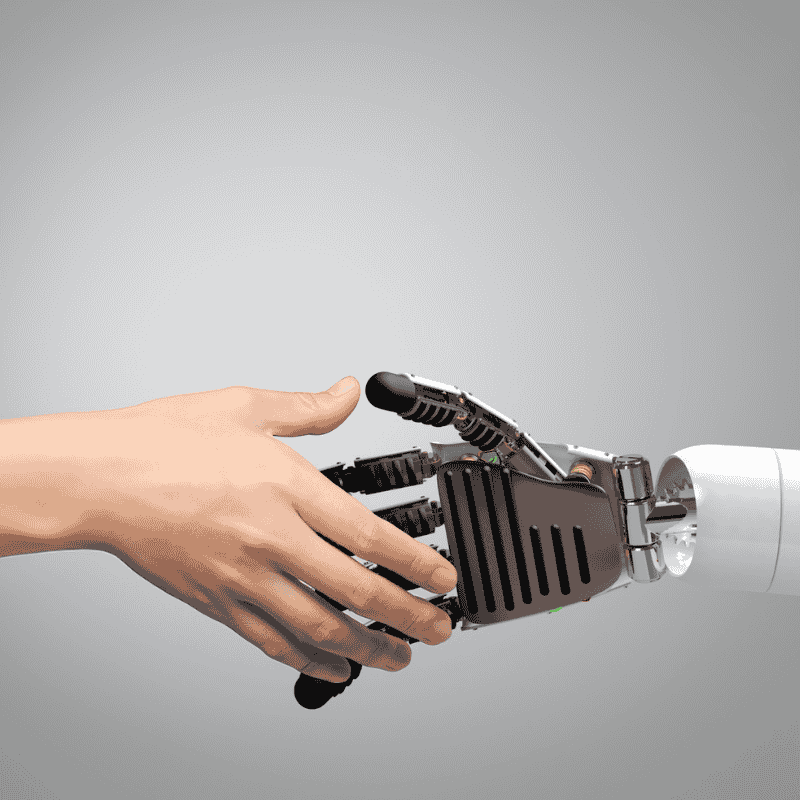AI automation software has revolutionized how businesses operate in 2025. The best AI automation software solutions are transforming industries by streamlining workflows, enhancing productivity, and enabling data-driven decision-making. Whether you’re a startup, a growing SME, or an enterprise, leveraging the right AI automation software tools can be a game-changer for your operations. But with so many options available, how do you choose the one that aligns with your unique needs? According to 5 Best AI Automation Softwares in 2025 (Free & Pai, industry trends support these insights. According to List of Top 50 Best AI Automation Tools in 2025 –, industry trends support these insights.
In today’s fast-paced digital landscape, businesses face the challenge of managing complex processes while staying competitive. This is where AI automation software systems come into play. These incredible tools use advanced technologies like machine learning, robotic process automation (RPA), and natural language processing to automate repetitive tasks, reduce errors, and free up valuable time for strategic initiatives. However, not all solutions are created equal. To unlock the full potential of AI automation, it’s essential to understand the key features that make these tools effective.
In this guide, we’ll explore the ultimate features to look for in AI automation software, from seamless integrations and user-friendly interfaces to advanced analytics and scalability. We’ll also highlight how these tools can benefit small businesses, integrate with emerging technologies like IoT and blockchain, and deliver measurable ROI. Whether you’re new to automation or looking to upgrade your current system, this article will provide actionable insights to help you make an informed decision.
By the end, you’ll have a clear understanding of how to choose the best AI automation software solutions for your business needs, ensuring you stay ahead in the era of intelligent automation. Let’s dive in!
Key Features to Look for in AI Automation Software
Choosing the right AI automation software can transform your business by streamlining workflows, reducing errors, and boosting productivity. However, with so many options available, it’s crucial to identify the features that align with your needs. Whether you’re a startup, SME, or enterprise, understanding the AI automation software benefits will help you make an informed decision.
Essential AI Automation Software Features
When evaluating AI automation software, consider these must-have features:
1. Intelligent Process Automation (IPA)
AI-powered automation goes beyond basic rule-based tasks. Look for software that combines machine learning (ML) and robotic process automation (RPA) to handle complex workflows. For example:
- WorkFusion merges AI and RPA to automate data-heavy processes.
- UiPath offers advanced AI-driven automation for repetitive tasks.
2. Seamless Integrations
Your AI automation software should integrate smoothly with existing tools like CRM, ERP, and marketing platforms. Popular solutions include:
- Salesforce Einstein (AI-driven CRM automation)
- HubSpot (marketing and sales automation)
- Zapier (connects 5,000+ apps)
3. Natural Language Processing (NLP)
For customer support and data extraction, NLP-powered automation enhances efficiency. Examples:
- Drift (AI chatbots for customer interactions)
- Hyperscience (automates document processing)
4. Predictive Analytics & Reporting
AI-driven insights help optimize operations. Look for:
- ServiceNow AI Ops (automates IT operations with analytics)
- NICE Systems (contact center automation with real-time analytics)
5. Scalability & Customization
The best AI automation software grows with your business. Zoho AI and Automation Anywhere offer scalable solutions for startups and enterprises alike.
6. User-Friendly Interface
Non-technical teams should find the software easy to use. ClickUp and Moveworks simplify task automation with intuitive dashboards.
7. Security & Compliance
Ensure the software complies with industry standards (GDPR, HIPAA). Sage AI provides secure financial automation, while Inbenta offers AI-powered, compliant customer support tools.
Why These Features Matter
Investing in the right AI automation software advantages can:
✔ Reduce manual workload by up to 80%
✔ Minimize errors in data processing and customer interactions
✔ Boost ROI through faster, smarter workflows
Next Steps:
- Identify your business needs (e.g., marketing, finance, IT automation).
- Test free trials (many tools offer demos).
- Compare pricing and scalability before committing.
Looking for more insights? Check out our guide on [How AI Automation Improves Productivity](#) or explore [Top AI Automation Tools for Startups](#).
By focusing on these AI automation software features, you’ll find a solution that drives efficiency, cuts costs, and future-proofs your business.
What Features Should You Look for in AI Automation Software?
When selecting the best AI automation software, it’s essential to evaluate the features that align with your business needs. The right tool can streamline workflows, reduce manual effort, and enhance productivity. Here’s a detailed breakdown of the key features to consider in AI automation software:
1. Ease of Use and User Interface
The top AI automation software should offer an intuitive interface, especially for non-technical users. Tools like Zapier excel in this area, providing drag-and-drop functionality and pre-built templates. For example, Zapier’s user-friendly design allows even beginners to create complex workflows without coding. Similarly, platforms like HubSpot offer straightforward dashboards for marketing automation, making it easy to manage campaigns and track performance.
Actionable Tip: Look for software with a free trial to test its usability before committing.
2. Integration Capabilities
A robust AI automation software should seamlessly integrate with your existing tools and platforms. For instance, Salesforce Einstein integrates effortlessly with CRM systems, enabling AI-driven insights and automation within your sales pipeline. WorkFusion, on the other hand, combines AI and RPA to automate data-heavy processes across multiple platforms.
Comparison Table: Integration Capabilities
| Software | Key Integrations | Best For |
|———————–|————————————–|——————————|
| Salesforce Einstein | CRM, ERP, Marketing Tools | Sales and Marketing Teams |
| WorkFusion | ERP, BPM, Data Analytics | Data-Intensive Processes |
| HubSpot | Email, Social Media, CRM | Marketing Automation |
3. Advanced AI Capabilities
Not all automation tools are created equal. The best AI automation software leverages advanced technologies like machine learning, natural language processing (NLP), and predictive analytics. For example, UiPath uses AI to enhance robotic process automation (RPA), enabling smarter decision-making and error reduction. Similarly, Moveworks employs conversational AI to automate IT support, resolving issues in real-time.
Actionable Tip: Prioritize tools that offer AI-driven analytics to gain actionable insights from your data.
4. Scalability and Flexibility
Whether you’re a startup or an enterprise, your AI automation software should grow with your business. Automation Anywhere is a prime example, offering scalable solutions tailored to businesses of all sizes. Its cloud-based platform ensures flexibility, allowing you to automate processes across departments without significant infrastructure investments.
Example: A small e-commerce business can start with basic automation features and scale up to advanced analytics as their operations expand.
5. Security and Compliance
Data security is critical, especially when handling sensitive information. Look for software that adheres to industry standards like GDPR, HIPAA, or SOC 2. NICE Systems, for instance, provides AI-driven automation for contact centers while ensuring compliance with data protection regulations.
Actionable Tip: Verify the software’s security certifications and data encryption protocols before implementation.
6. Cost-Effectiveness
Budget is a key consideration for many businesses, particularly startups. While some AI automation software like UiPath and Automation Anywhere are geared towards enterprises, others like Zoho AI offer affordable plans for small businesses. For example, Zoho’s pricing starts at $12 per user/month, making it an accessible option for startups.
Comparison Table: Pricing
| Software | Starting Price | Best For |
|———————–|—————-|——————————|
| Zoho AI | $12/user/month| Small Businesses |
| UiPath | Custom Quote | Enterprises |
| Automation Anywhere | Custom Quote | Mid to Large Businesses |
7. Support and Training
Implementing AI automation software requires proper training and support. Tools like ServiceNow offer extensive documentation, video tutorials, and 24/7 customer support to ensure smooth adoption. Similarly, Hyperscience provides dedicated onboarding assistance for its document processing automation platform.
Actionable Tip: Choose software with comprehensive training resources to maximize ROI.
8. Customization Options
Every business has unique needs, so customization is crucial. Drift, for instance, allows businesses to tailor its conversational AI chatbots to match their brand voice and customer engagement strategies. Similarly, Sage AI offers customizable tools for accounting and financial automation.
9. Reporting and Analytics
The ability to track and measure performance is vital. AI automation software like HubSpot and Automation Anywhere include built-in analytics dashboards, providing insights into workflow efficiency, error rates, and ROI.
Example: A marketing team can use HubSpot’s analytics to measure campaign success and optimize future strategies.
10. Emerging Tech Integration
Finally, consider how well the software integrates with emerging technologies like
Key Features to Look for in AI Automation Software
When implementing AI automation software, it’s crucial to understand the features that will deliver the most value for your business. The right tools can streamline workflows, reduce manual effort, and enhance decision-making. Below, we’ll explore the essential features to consider and provide a step-by-step guide to help you evaluate and integrate the best solutions.
1. Intelligent Workflow Automation
One of the core features of AI automation software is its ability to automate repetitive tasks intelligently. Look for tools that offer customizable workflows, such as Zapier or UiPath, which allow you to create automation sequences tailored to your business needs. For example, you can automate email marketing campaigns by setting up triggers based on customer behavior.
*Implementation Tip:* Start by mapping out your current workflows and identifying repetitive tasks. Use the software’s visual workflow builder to create automation sequences. Test these workflows in a sandbox environment before deploying them live.
2. Advanced Machine Learning Capabilities
AI-driven automation tools should leverage machine learning (ML) to improve over time. For instance, tools like WorkFusion use ML to automate data-heavy processes, such as invoice processing or customer data entry. This feature ensures that the software becomes more accurate and efficient as it learns from your data.
*Best Practice:* Ensure your AI automation software integrates with your existing data sources. Regularly review the software’s performance metrics to identify areas for improvement.
3. Seamless Integration with Third-Party Apps
A key aspect of AI automation software setup is its ability to integrate with other tools your business relies on. Platforms like Salesforce Einstein and HubSpot offer native integrations with CRM systems, while tools like ServiceNow’s AI Ops can connect with IT management systems.
*Common Mistake to Avoid:* Failing to check compatibility with your existing tech stack can lead to integration challenges. Always verify the software’s API capabilities and supported integrations before purchasing.
4. Real-Time Analytics and Reporting
Effective AI automation software should provide real-time insights into your processes. Look for tools that offer dashboards and reporting features, such as Automation Anywhere, which tracks key performance indicators (KPIs) like task completion rates and error reduction.
*Success Metric Example:* Measure the time saved on manual tasks and the reduction in errors after implementing automation. Aim for a 20-30% improvement in efficiency within the first three months.
5. User-Friendly Interface
Even the most advanced AI automation software should be accessible to non-technical users. Platforms like Zoho AI and Drift prioritize ease of use with intuitive interfaces and drag-and-drop functionality.
*Implementation Tip:* Provide training sessions for your team to ensure they’re comfortable using the software. Start with basic workflows and gradually introduce more complex automations.
6. Scalability and Flexibility
As your business grows, your automation needs will evolve. Choose software that can scale with your operations, such as Hyperscience, which specializes in document processing automation for enterprises.
*Troubleshooting Tip:* If you encounter performance issues as you scale, consider upgrading to a higher-tier plan or optimizing your workflows for efficiency.
7. Security and Compliance
AI automation software often handles sensitive data, so robust security features are essential. Ensure the software complies with industry standards like GDPR or HIPAA, depending on your business requirements.
*Best Practice:* Regularly update the software to the latest version and enable encryption for data in transit and at rest.
Final Thoughts
When integrating AI automation software, focus on features that align with your business goals and existing processes. By prioritizing intelligent workflow automation, machine learning capabilities, seamless integrations, and real-time analytics, you can maximize the ROI of your automation efforts. Remember to address potential challenges, such as compatibility issues or scalability concerns, to ensure a smooth implementation.
By following these guidelines, you’ll be well-equipped to choose and implement the best AI automation software for your needs, driving efficiency and innovation across your organization.
What is AI automation software?
AI automation software refers to tools that use artificial intelligence (AI) to automate repetitive tasks, streamline workflows, and enhance decision-making processes. These tools leverage technologies like machine learning, natural language processing, and robotic process automation (RPA) to perform tasks such as data entry, customer support, and process optimization. Examples include WorkFusion for data-heavy processes and Salesforce Einstein for CRM automation. AI automation software is ideal for businesses looking to improve efficiency and reduce manual effort.
How much does AI automation software cost?
The cost of AI automation software varies widely based on features, scalability, and vendor. Entry-level tools like Zoho AI start at around $20/month, while enterprise solutions like UiPath or Automation Anywhere can cost $1,000+/month. Many providers offer tiered pricing, with basic plans for small businesses and advanced plans for larger organizations. Free trials and freemium models are also common, allowing users to test tools like HubSpot’s AI features before committing. Always consider ROI when evaluating AI automation software cost.
How to implement AI automation software?
Implementing AI automation software involves several steps:
- Identify Needs: Determine which tasks or processes to automate.
- Choose the Right Tool: Select software that aligns with your goals, such as Hyperscience for document processing or Drift for conversational AI.
- Integrate Systems: Connect the software with existing tools like CRM or ERP systems.
- Train Your Team: Provide training to ensure smooth adoption.
- Monitor and Optimize: Continuously track performance and make adjustments. For example, ServiceNow’s AI Ops can help automate IT operations with minimal disruption.
What are the benefits of AI automation software?
AI automation software offers numerous benefits, including:
- Increased Efficiency: Automates repetitive tasks, saving time and resources.
- Improved Accuracy: Reduces human errors in data entry and processing.
- Cost Savings: Lowers operational costs by minimizing manual labor.
- Scalability: Handles growing workloads without additional staff.
- Enhanced Customer Experience: Tools like Inbenta improve customer support with AI-driven responses. These benefits make AI automation software a valuable investment for businesses of all sizes.
Which AI automation software is best for small businesses?
For small businesses, cost-effective and user-friendly AI automation software is essential. Recommended options include:
- Zoho AI: Affordable CRM and business process automation.
- HubSpot: AI tools for marketing automation and lead management.
- Clara Labs: AI-powered scheduling automation.
These tools are scalable, easy to implement, and designed to meet the needs of startups and SMEs.
What are common challenges with AI automation software?
Common challenges include:
- High Initial Costs: Some tools require significant upfront investment.
- Integration Issues: Difficulty connecting with existing systems.
- Lack of Expertise: Limited technical knowledge can hinder implementation.
- Data Privacy Concerns: Ensuring compliance with regulations like GDPR. To overcome these, choose user-friendly tools like Moveworks for IT support automation and prioritize training and compliance.
What is the future of AI automation software?
The future of AI automation software is promising, with trends like:
- Integration with Emerging Tech: Combining AI with IoT, blockchain, and edge computing.
- Hyperautomation: Automating end-to-end business processes.
- AI-Driven Analytics: Enhancing decision-making with predictive insights.
- Personalization: Tailoring automation to individual user needs. Tools like NICE Systems are already leading the way in AI-driven contact center automation, showcasing the potential for innovation in this space.
By understanding these FAQs, you can make informed decisions about how to use AI automation software effectively and maximize its benefits for your business.
Conclusion: Transform Your Business with AI Automation Software
Choosing the right AI automation software can be a game-changer for your business, driving efficiency, reducing costs, and unlocking new opportunities for growth. Throughout this guide, we’ve explored the essential features to look for, including advanced AI capabilities, seamless integrations, scalability, and user-friendly interfaces. Whether you’re a startup or an enterprise, the right AI automation software can streamline workflows, enhance decision-making, and future-proof your operations.
One of the key takeaways is that not all solutions are created equal. Tools like WorkFusion and UiPath excel in robotic process automation (RPA), while platforms like Salesforce Einstein and HubSpot focus on CRM and marketing automation. It’s crucial to align your choice with your specific business needs and goals. Additionally, emerging trends like AI integration with IoT and blockchain are shaping the future of automation, offering even more possibilities for innovation.
If you’re concerned about implementation challenges, rest assured that many providers offer robust support and beginner-friendly resources. Start small, test the waters, and scale as you see results. The ROI of AI automation software is undeniable, with businesses across industries reporting significant productivity gains and cost savings.
Ready to take the next step? Explore our in-depth guide on the [10 Best AI Automation Tools for 2025](https://www.example.com) to find the perfect fit for your business. Don’t wait—automate your future today and stay ahead of the competition. The time to act is now!






0 Comments